How to Grow Leyland Cypress: Everything You Need to Know
- March 21, 2024
- 2 comment
Discover how to grow Leyland Cypress, a popular hybrid conifer known for its rapid growth and lush foliage. Learn comprehensive cultivation and maintenance tips for healthy trees. This versatile tree, a cross between the Monterey Cypress and the Nootka Cypress, is not only aesthetically pleasing but also serves practical purposes such as creating privacy screens and windbreaks. This guide aims to provide comprehensive instructions on cultivating and maintaining healthy Leyland Cypress trees.
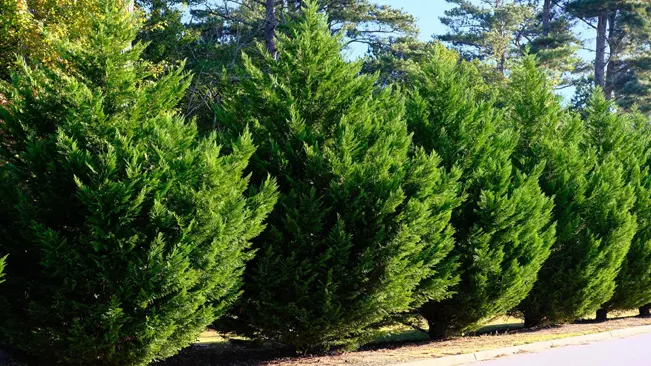
List on How To Grow Leyland Cypress
Choosing the Right Location
The first step in growing Leyland Cypress is choosing an appropriate planting site. These trees thrive in full sun but can tolerate partial shade. Select a location that receives at least six hours of direct sunlight daily. Leyland Cypress prefers well-drained soil; avoid areas where water tends to collect. The tree’s rapid growth and eventual large size also necessitate ample space – plan for a minimum of 8-10 feet between each tree if planting a row for a hedge or screen.
Sunlight Requirements
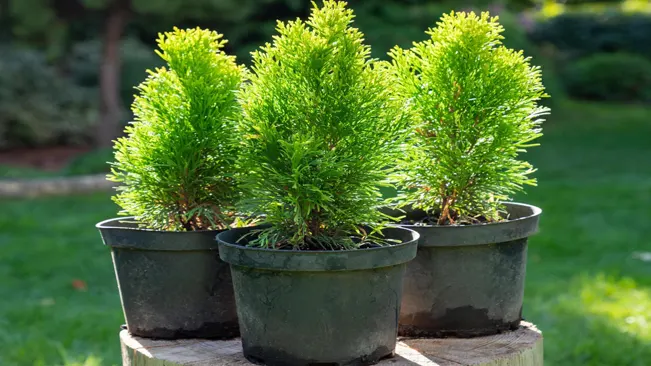
- Full Sun to Partial Shade: Leyland Cypress performs best in full sun, meaning a minimum of six hours of direct, unfiltered sunlight each day. This amount of light is crucial for the tree’s growth and health.
- Impact of Light on Growth: In areas with less light (partial shade), the tree may not grow as vigorously or densely. While it can tolerate these conditions, the ideal is a sunny spot for optimal growth and foliage density.
Soil Conditions
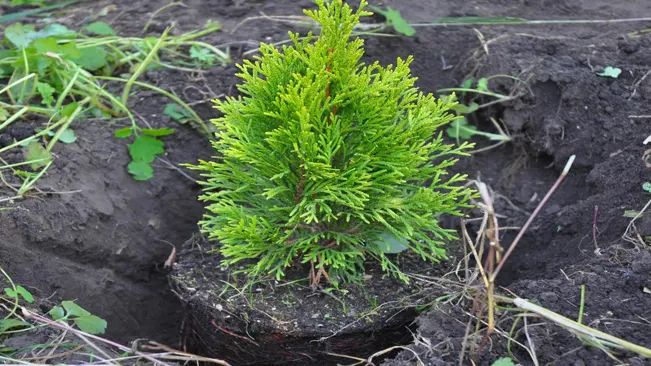
- Well-Drained Soil: The importance of well-drained soil can’t be overstressed. Leyland Cypress does not do well in waterlogged or consistently wet soils, as this can lead to root rot and other diseases.
- Soil Type Variability: While it can adapt to a variety of soil types, from clay to sandy soils, the key is that the soil must drain well. If you have heavy or compacted soil, consider amending it with organic material to improve drainage.
Space Requirements
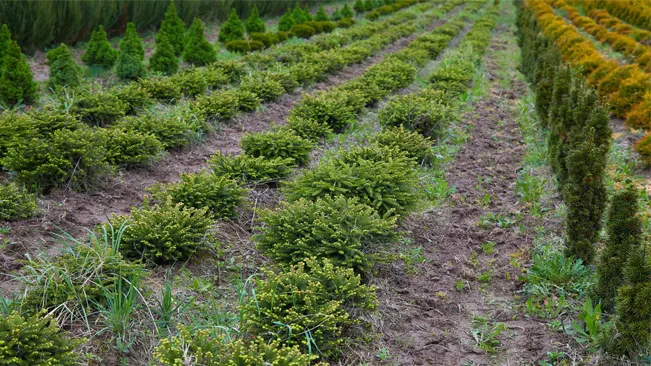
- Spacing for Growth: Leyland Cypress can grow quite large – up to 60-70 feet tall and 15-25 feet wide. It’s crucial to give each tree enough space to grow. This means planning for a minimum of 8-10 feet between each tree, especially when planting for a hedge or screen.
- Consider Future Growth: Often, people underestimate how large these trees can get. It’s important to envision the mature size of the tree and plant accordingly, ensuring it won’t encroach on buildings, power lines, or other structures.
Environmental Considerations
- Wind and Exposure: While Leyland Cypress is used as a windbreak, it’s also important to protect young trees from very strong winds until they establish a robust root system.
- Proximity to Other Plants: Given their size and root spread, consider the impact Leyland Cypress will have on nearby plants. Its dense foliage can create significant shade, which might affect the growth of underplantings or neighboring plants that require full sun.
Long-Term Planning
- Growth Rate and Maintenance: Understanding that these trees grow rapidly (2-3 feet per year) is essential for planning. Regular pruning and maintenance will be necessary to keep them in shape, especially if grown as a hedge.
- Landscape Impact: The Leyland Cypress can dominate a landscape due to its size and density. Its placement should be thought through in the context of the overall garden or landscape design.
Planting
The best time to plant Leyland Cypress is during the cooler months of early spring or fall. This timing allows the root system to establish itself before the stress of summer heat or winter cold.
Understanding the Planting Process

- Choosing the Right Time: Planting during the early spring or fall is crucial as it avoids the extremes of summer heat and winter cold. This period provides a more temperate environment which is conducive to root establishment.
- Preparing the Hole: The hole should be twice as wide and as deep as the root ball of your Leyland Cypress. This spaciousness is necessary to give the roots enough room to spread and access nutrients effectively.
- Amending the Soil: If your soil isn’t well-drained or lacks nutrients, incorporating organic matter can be beneficial. Materials like compost or aged manure can improve soil texture, drainage, and nutrient content, creating a more hospitable environment for the roots.
- Planting the Tree: Position the tree so that the top of the root ball is level with the surrounding ground. This placement ensures that the tree isn’t planted too deep, which can lead to root rot or oxygen deprivation.
- Backfilling the Hole: After placing the tree, backfill the hole with the removed soil, gently tamping it down to eliminate air pockets. Air pockets can cause roots to dry out or prevent them from establishing firm contact with the soil.
- Watering: Water the tree thoroughly after planting. This initial watering helps to settle the soil around the roots and provides the necessary hydration to start the growth process.
- Mulching: Apply a layer of mulch around the base of the tree, extending out to the edge of the hole. Mulch helps to retain soil moisture, regulate soil temperature, and reduce weed competition. Be sure to keep the mulch a few inches away from the trunk to prevent moisture buildup against the bark.
Post-Planting Care Tips
- Monitoring Water Needs: Continue to monitor soil moisture levels, especially during the first growing season. The soil should be kept consistently moist but not waterlogged.
- Adjusting Care with Seasons: Be attentive to the changing weather conditions. Newly planted trees can be more vulnerable to weather extremes in their first few years.
- Staking if Necessary: If the tree is tall or in a windy location, staking may be required for the first year to provide stability.
- Observation for Pests and Diseases: Keep an eye out for signs of pest infestations or diseases, which should be treated promptly to prevent serious damage.
Watering and Nutrition
Regular watering is crucial, especially during the tree’s first growing season. Provide enough water to keep the soil moist but not waterlogged. Once established, Leyland Cypress is relatively drought tolerant. Fertilize annually in early spring with a balanced, slow-release fertilizer to promote healthy growth.
Watering
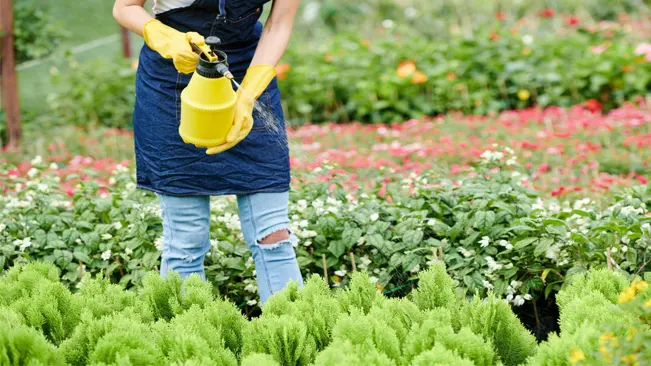
- Initial Watering: Leyland Cypress requires consistent watering immediately after planting. This step is crucial for the development of the root system. In the first few months, watering should be deep and regular, ensuring that moisture reaches the roots.
- Frequency and Amount: The frequency of watering depends on several factors, including soil type, climate, and season. Initially, water 2-3 times a week, allowing the soil to dry slightly between waterings. The goal is to maintain moist, not saturated, soil conditions. Adjust frequency depending on rainfall and temperature; less frequent watering is needed in cooler or rainy periods.
- Long-Term Watering: Once established, which typically takes about one to two years, Leyland Cypress becomes more drought-tolerant. However, during prolonged dry spells or extreme heat, supplemental watering may be necessary to prevent stress.
Nutrition
- Fertilizing Schedule: The best time to fertilize Leyland Cypress is in early spring, just as the growing season begins. This timing helps the tree utilize nutrients effectively for new growth.
- Type of Fertilizer: Use a balanced, slow-release fertilizer formulated for trees and shrubs. Look for a fertilizer with an N-P-K (Nitrogen-Phosphorus-Potassium) ratio like 10-10-10 or 20-20-20. These balanced formulas support overall tree health, including root development, leaf growth, and resistance to stress.
- Application: Follow the instructions on the fertilizer package for proper application rates and methods. It’s important to apply the fertilizer evenly around the base of the tree, extending out to the drip line (the area directly below the outer circumference of the tree branches). Avoid placing fertilizer too close to the trunk, as this can cause damage.
- Monitoring Tree Health: Observe your Leyland Cypress regularly for signs of nutrient deficiencies, such as yellowing needles or stunted growth. These symptoms might indicate the need for soil testing or adjusting the fertilization regimen.
Pruning and Maintenance
Pruning is essential for shaping the tree and encouraging dense growth, especially if you’re using it as a hedge. Prune in late winter or early spring before new growth begins. Avoid cutting into old wood, as this can hinder the tree’s recovery. Regularly check for pests such as bagworms or spider mites and diseases like canker, which can be detrimental. Promptly address any issues with appropriate treatments.

Pruning Techniques
- Timing: The ideal time for pruning is late winter or early spring, just before the growing season begins. This timing helps the tree to heal quickly and encourages new growth.
- Technique: Use sharp, clean pruning tools. Make your cuts at a slight angle to prevent water accumulation, which can lead to disease. For shaping hedges, prune in a way that the base is wider than the top, allowing sunlight to reach the lower branches.
- Intensity: Leyland Cypress tolerates heavy pruning, but it’s best to avoid cutting back more than one-third of the tree’s height in a single season. Cutting back into old wood (where there are no green needles) should be avoided as it may not regrow.
- Shaping for Hedges: If using Leyland Cypress for hedges, maintain a manageable height and width from the start. Regular light trimming is better than infrequent heavy pruning.
Maintenance and Health Monitoring
- Watering: While established trees are drought-tolerant, they benefit from occasional deep watering during prolonged dry periods. This helps maintain health and vigor.
- Fertilization: Annually, apply a balanced fertilizer in early spring to support robust growth. Be careful not to over-fertilize, as this can lead to lush growth that is more susceptible to disease and pests.
- Pest Management: Common pests include bagworms, which can be handpicked or treated with appropriate insecticides. Spider mites can also infest these trees, detectable by their fine webs. Miticides or horticultural oils can be effective against them.
- Disease Control: Leyland Cypress is susceptible to canker diseases, which can be identified by sunken, discolored areas on branches. Infected branches should be pruned out to prevent the spread. Good air circulation around the tree helps prevent fungal diseases.
- Monitoring: Regularly inspect the trees for signs of stress, such as browning or dropping needles, which could indicate water stress, pest infestations, or disease. Early detection is key to successful treatment.
- Mulching: Apply a layer of mulch around the base of the tree to help retain soil moisture and regulate temperature. Keep the mulch a few inches away from the trunk to prevent rot and rodent damage.
Conclusion
Growing Leyland Cypress can be a rewarding experience, resulting in a stunning green addition to your landscape. With proper care and maintenance, these trees will provide beauty and privacy for many years. Remember that the key to a thriving Leyland Cypress is choosing the right location, proper planting, consistent watering and nutrition, and regular pruning and maintenance.
FAQs (Frequently Asked Questions)
- What is the best time of year to plant Leyland Cypress?
The optimal planting times are early spring or fall. This allows the tree to establish its root system before extreme temperatures in summer or winter. - How much sunlight do Leyland Cypress trees need?
They require full sun to partial shade, meaning at least six hours of direct sunlight per day. - What type of soil is suitable for Leyland Cypress?
Leyland Cypress prefers well-drained soil. It can tolerate a range of soil types but does poorly in overly wet or waterlogged conditions. - How often should I water a newly planted Leyland Cypress?
Regular watering is crucial in the first growing season. Keep the soil consistently moist but not saturated. Once established, the tree is relatively drought tolerant. - Do Leyland Cypress trees need fertilizer?
Yes, it’s beneficial to fertilize Leyland Cypress annually in early spring with a balanced, slow-release fertilizer to support healthy growth. - How fast do Leyland Cypress trees grow?
Leyland Cypress is known for its rapid growth, typically growing 2-3 feet per year under optimal conditions. - How tall and wide can Leyland Cypress trees grow?
They can reach heights of 60-70 feet and widths of 15-25 feet at maturity. - How close together should I plant Leyland Cypress for a hedge?
For a dense hedge, plant them 6-10 feet apart. This spacing allows room for growth while creating a solid screen. - Do I need to prune Leyland Cypress, and if so, how often?
Pruning is recommended for shaping and encouraging dense foliage, particularly for hedges. Prune in late winter or early spring before new growth starts. - What are common problems to watch out for with Leyland Cypress?
Be vigilant for signs of pests like bagworms or diseases like canker. Ensure proper spacing and air circulation to prevent fungal issues, and address any infestations or infections promptly.
For more expert gardening and advice, explore our guides, discover top recommendations in our best section, and delve into in-depth product reviews in our review section. Happy Gardening.

Kristine Moore
Forestry AuthorI'm Kristine Moore, a seasoned garden landscaping professional with over 30 years of experience. My extensive career has been dedicated to transforming outdoor spaces into stunning, sustainable landscapes. With a deep understanding of horticulture, design principles, and environmental stewardship, I have become a respected figure in the field, known for creating harmonious, visually appealing, and eco-friendly gardens. My commitment to excellence and continuous learning in landscaping trends and techniques has solidified my reputation as an expert in garden design and implementation.
2 comments
Need help with trees deteriorating.







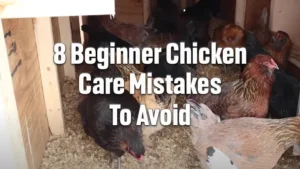



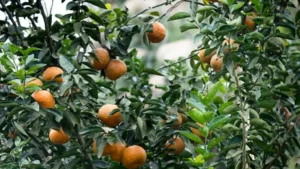

My very mature leyland cypress (80') is dropping tiny tan seeds more profusely than ever. What might this be signifying?
Robert Enders
September 16, 2024 9:21 pm